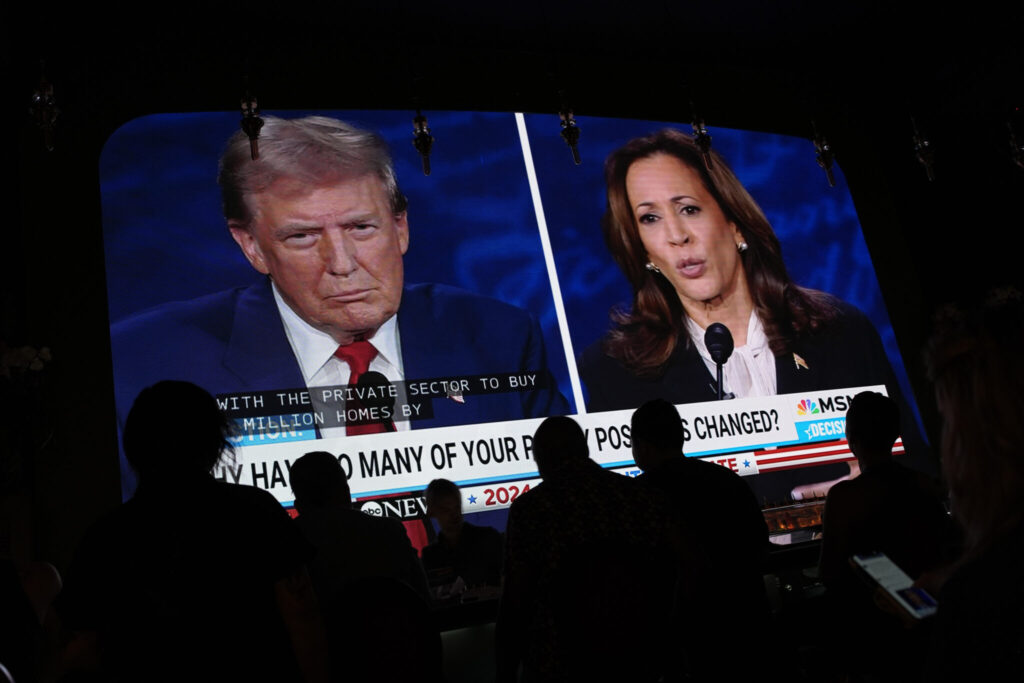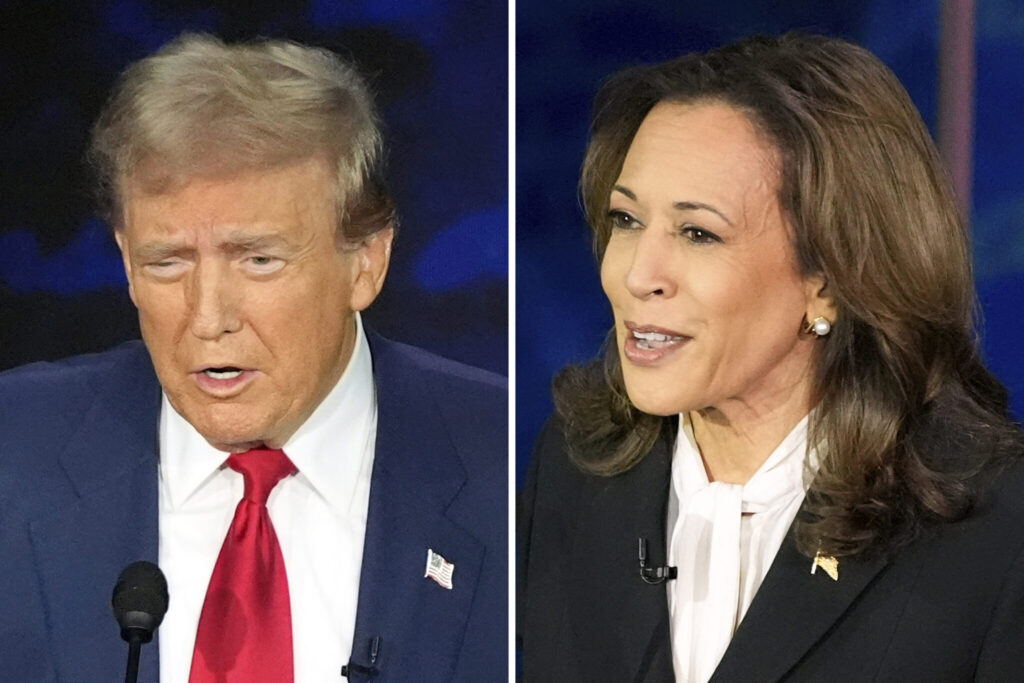Harris debate preparation/ Harris debate strategy/ Harris Trump debate preparation/ Kamala Harris debate performance/ Newslooks/ WASHINGTON/ J. Mansour/ Morning Edition/ Kamala Harris prepared extensively for her presidential debate against Donald Trump, including mock debates and advice from seasoned political aides. Her team anticipated Trump’s misinformation, like false claims about Haitian immigrants, and prepared her to respond. Harris leveraged her expressiveness and targeted jabs to unsettle Trump, focusing on policy issues while delivering a memorable performance.

Kamala Harris’ Debate Preparation Quick Looks:
- Kamala Harris underwent five days of debate preparation in Pittsburgh, including mock debates.
- Her team warned her that Trump might bring up false claims about Haitian immigrants.
- Harris strategically used the debate’s split-screen format to showcase her reactions to Trump’s comments.
- Debate rehearsals included a mock version of Trump played by Philippe Reines, a former Clinton aide.
- Harris adopted a strategy to mock and needle Trump, aiming to throw him off balance.
- Despite no changes to microphone rules, Harris focused on using expressive gestures to enhance her presence.
- The debate featured a bizarre moment where Trump repeated false claims about migrants eating pets.
- Harris closed the debate by emphasizing a future-focused vision, contrasting Trump’s rhetoric.
Behind the Scenes: How Harris & Trump prep for the Debate
Deep Look:
Kamala Harris entered her debate against Donald Trump with days of intense preparation and a clear strategy to showcase her strengths while keeping her opponent off balance. With her team setting up a full mock debate environment in a Pittsburgh hotel, Harris aimed to ensure her first in-person encounter with Trump was as smooth as possible. Her preparation paid particular attention to Trump’s likely tactics, including his tendency to make outrageous and unverified claims.
One of the strangest warnings came just an hour before the debate when Harris’s communications aides informed her of Trump’s false social media posts about Haitian migrants in Springfield, Ohio, supposedly eating people’s pets. As expected, Trump referenced these false claims during the debate, saying, “They’re eating the dogs and the cats.” Harris’s response—a combination of laughter, disbelief, and moving on quickly—became one of the debate’s most memorable moments, and it spawned numerous memes online.
During her time in Pittsburgh, Harris rehearsed for the debate in a fully recreated set of the National Constitution Center in Philadelphia, where the actual debate took place. In a contrast to earlier campaigns, when Harris had used makeshift setups, this time her team spared no detail in making sure the preparations felt as real as possible. Two of her communications aides acted as the debate moderators, and Philippe Reines, who had impersonated Trump during Hillary Clinton’s debate preparations in 2016, reprised his role as the former president. Dressed in a dark suit, red tie, and even wearing orange bronzer, Reines helped Harris practice handling Trump’s bombastic style.
While microphones were set to mute when candidates were not speaking, Harris’s staff had hoped for them to remain on throughout the debate, which would have allowed for more spontaneous interactions. Though this plan didn’t come to fruition, Harris adapted her approach to the split-screen format. She used her expressions—raising eyebrows, laughing, or giving quizzical looks—as a form of silent commentary, making the most of every moment the camera was on her.
Harris’s team had anticipated that Trump might try to fluster her with outlandish statements, and they made sure she was prepared to deal with those moments effectively. The key moment arrived when Trump, discussing immigration, falsely claimed that migrants in Springfield, Ohio, were “eating the dogs and the cats.” Harris, clearly bemused, laughed and shook her head, responding with, “Talk about extreme,” before moving on. The moment quickly went viral online, reinforcing her ability to handle Trump’s provocations with grace and humor.
Her debate strategy also included direct jabs at Trump’s campaign, including teasing him about the smaller size of his rally crowds compared to earlier years. Harris also hit key policy issues, especially on abortion, where she took a firm stand and contrasted her vision of the future with Trump’s more backward-looking rhetoric. Throughout the night, she maintained her composure while Trump grew more visibly agitated.
The debate was a critical moment for Harris, as it may be the only one she and Trump will face this election season, with Trump refusing to commit to any future debates. Harris’s team saw this as their best chance to showcase her leadership, especially since she had taken over as the Democratic nominee after Joe Biden dropped out of the race. Despite Trump’s refusal to participate in more debates, Harris made the most of this opportunity, underscoring her message of looking toward the future while presenting herself as the candidate of stability and vision.
One of the key decisions Harris made was to rely on her natural mannerisms rather than practicing specific gestures, a move that allowed her to appear more authentic on screen. Her expressiveness played a big role in how viewers interpreted the debate, with her facial reactions frequently becoming memes on social media.
During a commercial break, Trump left the stage in frustration, while Harris calmly reviewed her notes and took a sip of water, preparing for her final statement. She concluded by telling voters that they had seen two starkly different visions of the country on display that night—hers, which was focused on the future, and Trump’s, which was stuck in the past.
Trump, on the other hand, ended his performance by calling Harris “the worst vice president in the history of our country.” Without an audience in the room, it was difficult to gauge immediate reactions to the candidates’ statements. However, Harris’s team was quick to amplify her debate highlights across social media and in television ads, helping her capitalize on the moment. Meanwhile, Trump’s campaign appeared less organized in the aftermath, as they failed to launch any major media push to claim victory.
Harris left the stage with a question for her team: “How did I do?” It’s clear that, with days of preparation behind her, Harris had delivered the performance she had aimed for, offering a contrast to Trump and setting herself up as a steady leader with a forward-looking vision for America.







